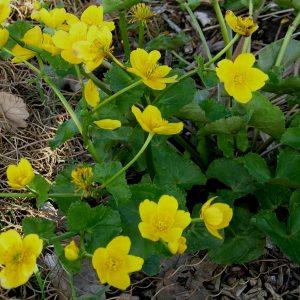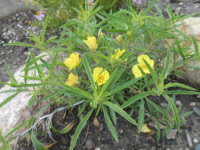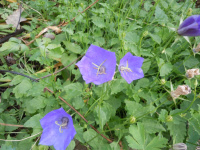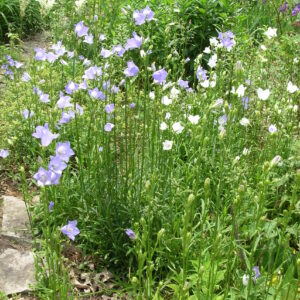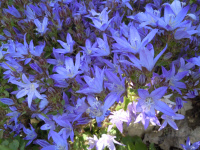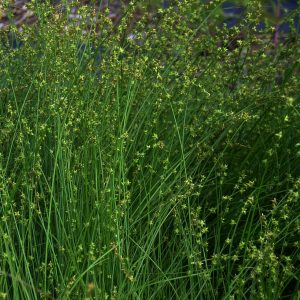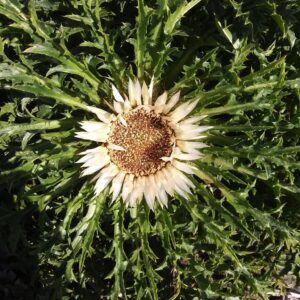Perennials & Biennials
Showing 89–96 of 484 results
-
Caltha palustris Marsh marigold, Kingscup Zones 3-7
Finch yellow buttercups in early spring over round, kidney-shaped foliage
Finch yellow buttercups in early spring over round, kidney-shaped foliage
Size: 12-16” x 12-16”
Care: sun to part shade in moist, acidic soil
Native: Canada to No. Dakota, S to TN, Wisconsin native
Wildlife Value: attracts bees and hummingbirds for nectar. Deters deer – leaves contain mild poison.Caltha is Latin meaning cup and palustris means boggy or marsh. America’s 1st people used the roots medicinally to cure colds and sores and to induce vomiting. The roots also protected against “love charms,” but I suspect vomiting might have done that. An infusion of leaves remedied constipation. Believed to have grown as long ago as the Ice Age. Introduced to Europe very early and memorialized in Chaucer’s poetry, 1549. First described by French botanist Joseph Tournefort c 1700. Grown in the Eichstatt Garden of Prince-bishop Johann Konrad von Gemmingen in Bavaria c. 1600. William Robinson described them as “shin(ing) like fires in swamps and hollows.” Pressed specimen in Emily Dickinson’s herbarium.
-
Calylophus serrulatus Yellow sundrops, Shrubby evening primrose Z 4-9
Lemon yellow silky petals bloom late spring to early fall on this tough-as-nails native
OUT OF STOCK
Lemon yellow silky petals bloom late spring to early fall on this tough-as-nails native
Size: 9-18” x 12-15”
Care: sun in well-drained soil, drought tolerant
Native: Great Plains: Central Canada to TX, Michigan to Montana, WI native1st described in 1818 by Thomas Nuttall, English planthunter who collected hundreds of “new” plants in North America. Caly is Greek for calyx; lophos for “the back of the neck; crest of a hill or helmet” serrulatus means “minutely serrate” or “saw-toothed” describing the leaf margins.
-
Campanula carpatica Tussock bellflower, Carpathian bellflower Z 3-8
In summer blue, violet or white bells
In summer blue, violet or white bells.
Size: 12” x 12”
Care: Sun moist well-drained soil
Native: Carpathian mountains in central Europe
Awards: England’s Royal Horticultural Society Award of Merit.Campanula is Latin means little bell. In 1629 Parkinson described campanulas as “cherished for the beautie of their flowers…” Young roots of this species were eaten in “sallets.” Introduced to European gardens from the Carpathian Mountains in 1774. Sold by McMahon’s Philadelphia nursery in the early 1800’s. Probably cultivated by Jefferson at Monticello.
-
Campanula persicifolia Peach-leafed bellflower Z 3-8
June – July (with deadheading) white or blue open-facing bell flowers along the top foot of the erect, leafless stems.
June – July (with deadheading) white or blue open-facing bell flowers along the top foot of the erect, leafless stems.
Size: 24-36" x 10"
Care: Sun in moist well-drained soil.
Native: EuropeCampanula is Latin meaning little bell. Persicifolia means leaves like a peach. Both white and blue ones of C. persicifolia grew in English gardens before 1580, then described in literature by Scottish botanist Robert Morison (1620-1683). English herbalists prescribed C. persicifolia for ailments of the mouth and throat and to clear complexions.
-
Campanula poscharskyana Adriatic bellflower, Serbian bellflower Z 4-8
Riot of lilac colored star-shaped blooms May – June over this short, trailing mound of leaves.
Riot of lilac colored star-shaped blooms May – June over this short, trailing mound of leaves.
Size: 6" X 24" spreads
Care: Sun to part shade in moist well-drained soil.
Native: Mountains of Eastern Europe
Awards: Top rated by the Chicago Botanic Garden. Elisabeth Carey Miller Botanical Garden Great Plant PickCampanula is Latin meaning “little bell.” Collected before 1822. Named for 19th century German plantsman, Gustav Poscharsky.
-
Campanula rotundifolia Harebell, Bluebell of Scotland Z 3-8
Its delicate appearance conceals its hardy constitution. Dainty bluish-lilac bells to 12” stems on bushy round ground-hugging foliage. Blooms from June to October and occasionally November. Perfect for rock gardens and borders.
Its delicate appearance conceals its hardy constitution. Dainty bluish-lilac bells to 12” stems on bushy round ground-hugging foliage. Blooms from June to October and occasionally November. Perfect for rock gardens and borders.
Size: 9-12" x 12"
Care: Sun to part shade in moist well-drained soil
Native: Europe, Siberia and North America, including Wisconsin
Wildlife Value: Walnut and deer tolerantLakota ate the leaves raw and cooked and made an infusion of the roots to remedy earaches. Sir Walter Scott immortalized the Bluebell of Scotland in Lady of the Lake. Also a subject of Emily Dickinson’s poetry.
-
Carex rosea Rosy sedge, Stellate sedge PERENNIAL GRASS Z 3-9
Mounds of thinnest of medium green leaves mingled with stems with star shaped seed clusters in May-June
OUT OF STOCK
Mounds of thinnest of medium green leaves mingled with stems with star shaped seed clusters in May-June.
Size: 12” x 10”
Care: part shade and shade in moist well-drained soil
Wildlife Value: No. Dakota south to TX & east incl. WI, New Brunswick and Nova Scotia.
Awards: Great Plants for the Great Plains Grass of the Year 2020Collected before 1811.
-
Carlina acaulis ssp. simplex Silver thistle, Weather thistle Z 3-9
Wide, white saucer flowers above silvery thistle foliage, open on dry days, closed in the evenings and on rainy days. July- September
OUT OF STOCK
Wide, white saucer flowers above silvery thistle foliage, open on dry days, closed in the evenings and on rainy days. July- September
Size: 6-12” x 12”
Care: sun in well-drained soil.
Native: Southern & Eastern Europe
Wildlife Value: attracts honey-beesThe Genus comes from Charles (Carolus). According to medieval folklore Charlemagne used this root to cure the ills of his troops.

